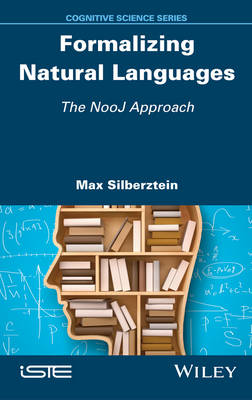
Stock image for illustration purposes only - book cover, edition or condition may vary.
Formalizing Natural Languages: The NooJ Approach
Max Silberztein
€ 222.69
FREE Delivery in Ireland
Description for Formalizing Natural Languages: The NooJ Approach
Hardback. BIC Classification: CF. Category: (P) Professional & Vocational. Weight in Grams: 666.
This book is at the very heart of linguistics. It provides the theoretical and methodological framework needed to create a successful linguistic project. Potential applications of descriptive linguistics include spell-checkers, intelligent search engines, information extractors and annotators, automatic summary producers, automatic translators, and more. These applications have considerable economic potential, and it is therefore important for linguists to make use of these technologies and to be able to contribute to them. The author provides linguists with tools to help them formalize natural languages and aid in the building of software able to automatically process texts written in natural language (Natural Language Processing, or NLP). Computers are a vital tool for this, as characterizing a phenomenon using mathematical rules leads to its formalization. NooJ a linguistic development environment software developed by the author is described and practically applied to examples of NLP.
Product Details
Publisher
ISTE Ltd and John Wiley & Sons Inc
Format
Hardback
Publication date
2016
Condition
New
Number of Pages
346
Place of Publication
London, United Kingdom
ISBN
9781848219021
SKU
V9781848219021
Shipping Time
Usually ships in 7 to 11 working days
Ref
99-50
About Max Silberztein
Max Silberztein is President of the International NooJ Association. His research focuses on computational linguistics and language formalization.
Reviews for Formalizing Natural Languages: The NooJ Approach
This book lays ground for better understanding of both computational linguistics (CL) and natural language processing (NLP) perspectives, i.e. it shows how to describe language (CL) in order to build the best NLP applications (NLP). The book bridges the gap between theoretical linguistic phenomena and practical language models. It shows how computational linguists and language engineers working together can bring us closer to better language understanding by both humans and computers. The author takes us on a stroll through the layers of language processing, explaining very soundly and giving examples and counterexamples that bring additional clarification for each step we make on that path. Starting with the tiny bits of written language, the alphabet, via dictionary and atomic linguistic units that occupy it, he clarifies the importance of each step, giving us solid ground to build upon any language project we might venture to undertake. Silberztein knows how to invite an audience into his Project, as he calls it, and introduces the topic in such a manner that makes you want to read the book until the last page (and solve all the CL and NLP problems on the way). He smoothly transitions through Parts one, two and three, building one topic upon the previous one, as if playing with lego blocks. He begins by demonstrating the importance of defining basic (atomic) linguistic units starting with the alphabet and vocabulary that prepare us for the construction of electronic dictionaries. It is the design of the e-dictionary that will allow us and support us in formalizing the language of our interest. Thus, it is not a surprise that a thorough classification and understanding of our basic resources is needed to prepare (and prepare well) and specify affixes [re-, de-, un-, -ation], simple words [home, love, sky], multiword units [sweet potatoes, more and more, round table] and expressions [to give up, to turn off, to take off] that we will play around with to construct and annotate new words, phrases and sentences. He then takes regular grammars, context-free grammars, context-sensitive grammars and unrestricted grammars and he makes them all work via NooJ's multifaceted approach. The (beautiful) simplicity of this application is aligned with the way we, as humans, process vocabulary, grammar, orthography, syntax, semantics...thus making the NooJ as a tool easy to use by beginners and more advanced users alike. It is only expected that the journey will end with applications both in parsing and generating written text. We are presented with the lexical analysis, syntactic analysis (local and structural) and transformational analysis that open up the door for more sophisticated NLP applications (Question Answering, Machine Translation, Semantic Analyzer, etc.). The most expected audience of 'Formalizing Natural Languages: The NooJ Approach' are linguists i.e. computational linguists and NLP people (or as the author likes to call them language engieers). But, since the book holds the key that can open a whole sea of possible applications in the domains of other subfields, I would recommend it to etymologists, sociolinguists, psycholinguists, forensic linguists, internet linguists, corpus linguists or to any data scientist today. Having each chapter end with exercises and additional internet links, the book is also suitable as a class reading in NLP and CL classes, machine translation and similar. The book is presented in a way as to improve the understanding of the ways the natural language can be formalized and has the power to reveal some new applications to almost any type of written text. Since the book and NooJ as a tool came into existence in the era dominated by unstructured data, the potential of presented tool is limited only by the imagination of its user. Kristina Kocijan Department of Information and Communication Sciences Faculty of Humanities and Social Sciences University of Zagreb, Croatia
